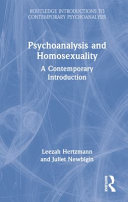

Most ebook files are in PDF format, so you can easily read them using various software such as Foxit Reader or directly on the Google Chrome browser.
Some ebook files are released by publishers in other formats such as .awz, .mobi, .epub, .fb2, etc. You may need to install specific software to read these formats on mobile/PC, such as Calibre.
Please read the tutorial at this link: https://ebookbell.com/faq
We offer FREE conversion to the popular formats you request; however, this may take some time. Therefore, right after payment, please email us, and we will try to provide the service as quickly as possible.
For some exceptional file formats or broken links (if any), please refrain from opening any disputes. Instead, email us first, and we will try to assist within a maximum of 6 hours.
EbookBell Team

4.8
104 reviewsThis important book examines the ways in which same sex desire, or "homosexuality" has been theorised by psychoanalysis during its history to date and the impact of that on clinical practice.
The authors explore a brief history of the developing social attitudes which influenced the evolution of psychoanalysis, from Freud’s radical questioning of psychosexuality, to the later developments that assumed a moral high ground for heteronormativity and led to the diagnosis of other forms of sexual expression as perversions requiring treatment. The book elucidates contemporary developments in psychoanalytic thinking about sexuality from a post-heteronormative standpoint, including an examination of how heteronormative bias has relegated lived sexual experience to the sidelines. The book challenges this bias and introduces new ways of using psychoanalytic ideas as well as illustrating their relevance to clinical practice. Drawing on vignettes, the authors describe current challenges that clinicians face and discuss the dilemmas that these challenges present, both for qualified clinicians as well as those in training.
By approaching "homosexuality" from a contemporary post-heteronormative position, the authors advocate a more flexible encounter in the consulting room in a way that can illuminate an understanding of all sexualities, including heterosexuality.